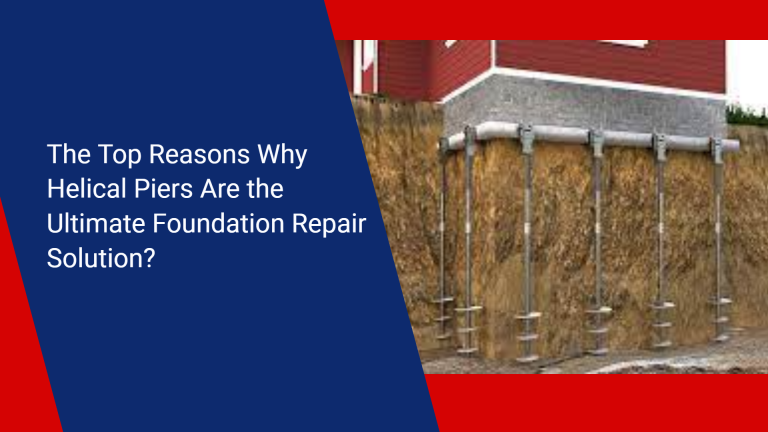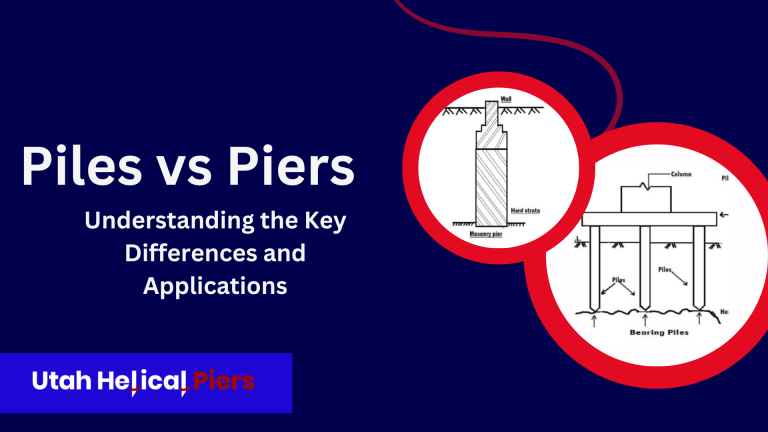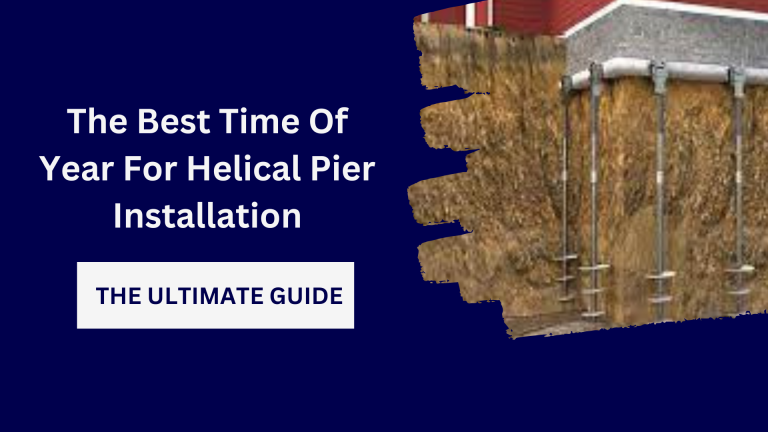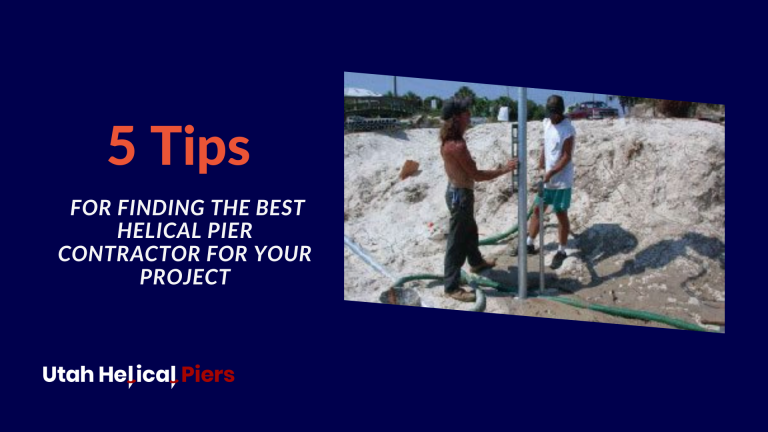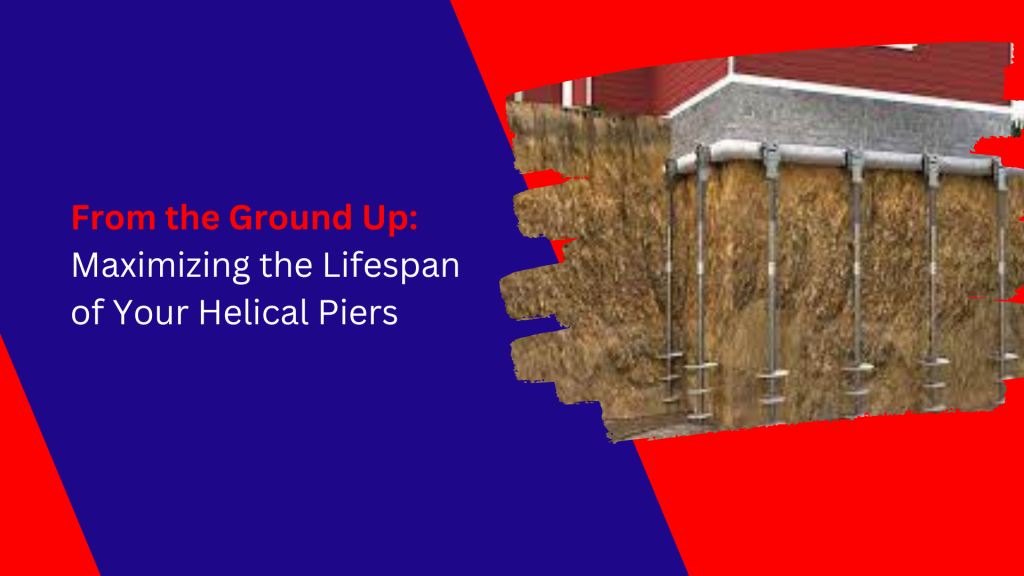
As a homeowner, you want to ensure that your property is built on a strong foundation that can withstand the test of time and environmental factors.
Helical piers are a popular choice for foundation support, thanks to their ability to provide stability and prevent settling.
However, like any other structure, helical piers require regular maintenance and upkeep to ensure they last for as long as possible.
In this article, we’ll explore some of the best practices for maximizing the lifespan of your helical piers, from choosing the right materials and installation methods to regular inspections and maintenance.
Whether you’re a homeowner looking to protect your investment or a contractor seeking to provide the best possible service to your clients, this guide will provide you with valuable insights and tips for keeping your helical piers in top shape for years to come.
So let’s get started and learn how to build a foundation that will stand the test of time, from the ground up.
Understanding the lifespan of Helical Piers
Before we dive into the various ways to maximize the lifespan of helical piers, it’s important to understand what affects their lifespan.
Helical piers are designed to provide support for structures by transferring the weight of the structure to the load-bearing soil beneath the surface.
They consist of a steel shaft with helical plates that are driven into the ground using hydraulic machinery. The depth and diameter of the helical piers depend on the type of soil and the weight of the structure they support.
The lifespan of helical piers depends on several factors, including the type and quality of the materials used, the installation process, soil conditions, and environmental factors.
When installed correctly, helical piers can last for decades and provide reliable support for structures. However, if any of these factors are compromised, the lifespan of helical piers can be significantly reduced.
Factors that affect the lifespan of Helical Piers
One of the most critical factors that affect the lifespan of helical piers is the type and quality of materials used.
Helical piers that are made from low-quality materials or are poorly manufactured may not withstand the stresses of the soil and the weight of the structure they support.
Similarly, the installation process plays a critical role in determining the lifespan of helical piers.
If the piers are not installed correctly or are not driven to the proper depth, they may not provide enough support, leading to settling and other damage.
Soil conditions also play an important role in determining the lifespan of helical piers. If the soil is too soft or too hard, it may not be able to provide enough support for the piers, leading to settling or shifting.
Similarly, environmental factors such as moisture, temperature changes, and seismic activity can also affect the lifespan of helical piers.
Moisture can cause the soil to expand and contract, while temperature changes can cause the soil to shift and settle. Seismic activity can cause the soil to shift and move, putting additional stress on the piers.
Common problems that affect the lifespan of Helical Piers
Several common problems can affect the lifespan of helical piers. One of the most common issues is settling, which occurs when the soil beneath the piers shifts or compresses, causing the structure to sink or shift. Settling can be caused by a variety of factors, including poor soil conditions, improper installation, or environmental factors.
Another common issue is corrosion, which can occur when the helical piers are exposed to moisture or other environmental factors. Corrosion can weaken the piers and compromise their ability to support the structure. Cracking or bending of the piers can also occur due to stress or improper installation.
Preventive measures to maximize the lifespan of Helical Piers
To maximize the lifespan of helical piers, it’s essential to take preventive measures that address the common problems that affect their lifespan. One of the best ways to prevent settling is to choose the right type of helical piers for your project. The type and size of piers you need depend on several factors, including the weight of the structure, soil conditions, and environmental factors. It’s essential to work with a professional who has experience installing helical piers and can help you choose the right type of piers for your project.
Another preventive measure is to ensure that the piers are installed correctly and driven to the proper depth. Proper installation ensures that the piers provide enough support and can withstand the weight of the structure. It’s also important to inspect the piers regularly to ensure that they are not showing any signs of settling or other damage.
Maintenance tips for Helical Piers
Regular maintenance is essential to maximize the lifespan of helical piers. One of the most important maintenance tasks is to keep the piers clean and free of debris. Debris and vegetation can accumulate around the piers and cause corrosion or other damage.
Another important maintenance task is to check the piers for signs of settling or other damage regularly. Signs of settling include cracks in the foundation or walls, doors and windows that don’t close properly, and uneven floors. If you notice any of these signs, it’s essential to contact a professional to inspect the piers and determine if they need to be replaced.
Signs that Helical Piers need replacement
Helical piers typically last for decades, but they may need to be replaced if they are showing signs of damage or wear. Signs that helical piers may need to be replaced include settling or shifting of the structure, cracks in the foundation or walls, doors and windows that don’t close properly, and uneven floors. If you notice any of these signs, it’s essential to contact a professional to inspect the piers and determine if they need to be replaced.
Choosing the right Helical Piers for your project
Choosing the right type and size of helical piers is essential to ensure that they provide enough support for your project. The type and size of piers you need depend on several factors, including the weight of the structure, soil conditions, and environmental factors. Working with a professional who has experience installing helical piers can help you choose the right type of piers for your project.
Professional installation of Helical Piers
Professional installation of helical piers is essential to ensure that they provide enough support for your project and last for as long as possible. It’s important to work with a professional who has experience installing helical piers and can ensure that the piers are installed correctly and driven to the proper depth. A professional can also help you choose the right type and size of piers for your project and provide regular inspections and maintenance to ensure that they are in top shape.
Conclusion
In conclusion, helical piers are an excellent choice for foundation support, thanks to their ability to provide stability and prevent settling. However, like any other structure, helical piers require regular maintenance and upkeep to ensure they last for as long as possible. By choosing the right materials and installation methods, taking preventive measures, and providing regular maintenance, you can maximize the lifespan of your helical piers and build a foundation that will stand the test of time. Whether you’re a homeowner or a contractor, working with a professional who has experience installing helical piers is essential to ensure that your project is a success.

